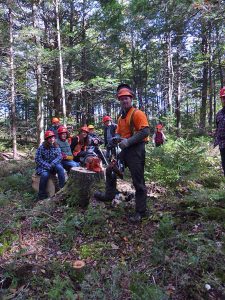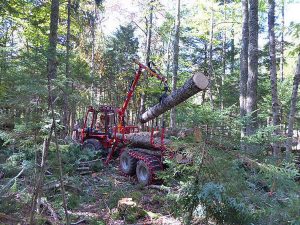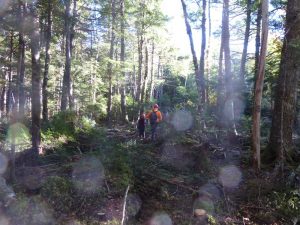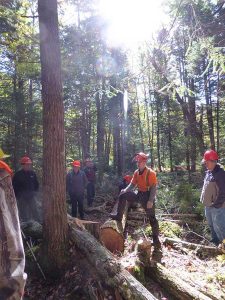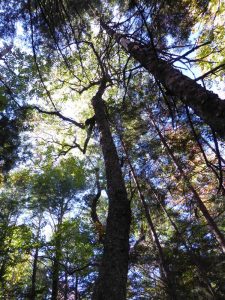A few photos from the Conform Limited/NSWOOA field day (Oct 6) on “Harvesting the Old-Fashioned Way: Smaller Machines and Bigger Trees” say a lot about Conform’s and the woodlot owner’s efforts to harvest selectively in a mixed, multi-aged “overmature” stand with as little disruption of the ecological integrity as is probably possible today, short of horse-logging in winter:
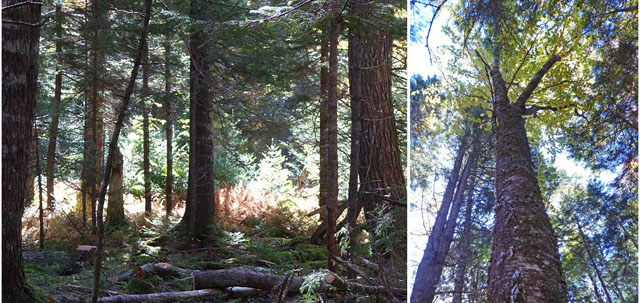
The site in Central NS hosts many 2ft+ dbh red spruce, hemlock and yellow birch, some red maple and occasional sugar maple and ash.
Click on photos for larger versions
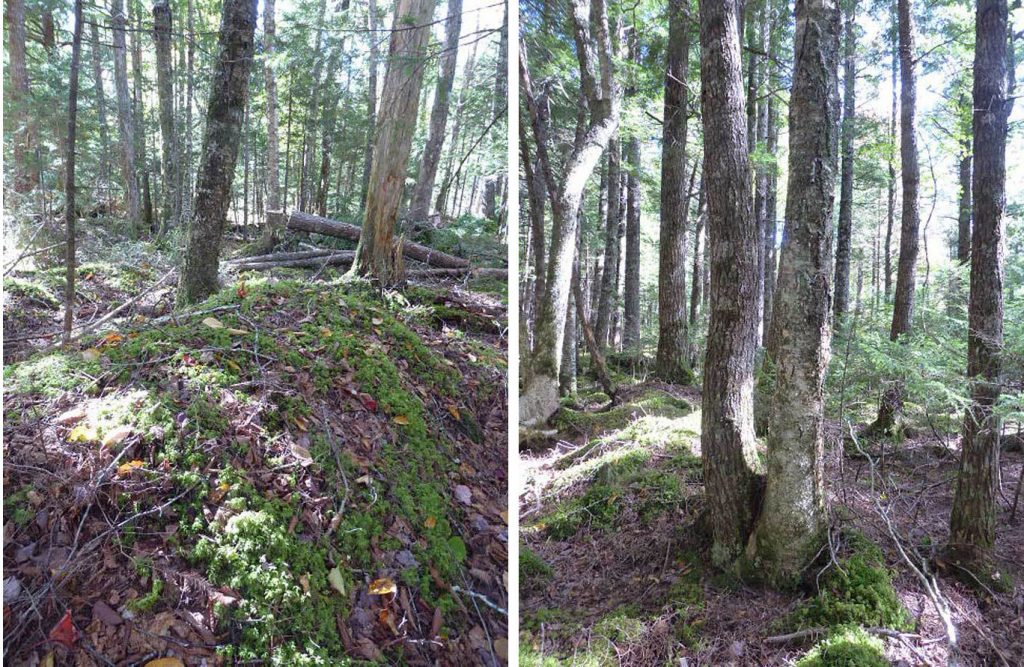
I was very interested to see many “pits and mounds” in the forest (top left) indicating a long history of not being harvesting intensively. Their orientation, and the maximum age of trees at this site (about 140 years) are similar to those I have observed in the area of Sandy Lake (Bedford) and suggest a similar history of old forests and winds. On the mounds, I observed more instances of the “Acadian Forest Love Affair” between yellow birch and hemlock (top right). Try this link to a Larger Version of the photos if clicking on the image above doesn’t bring one up (a quirk I cant seem to fix)
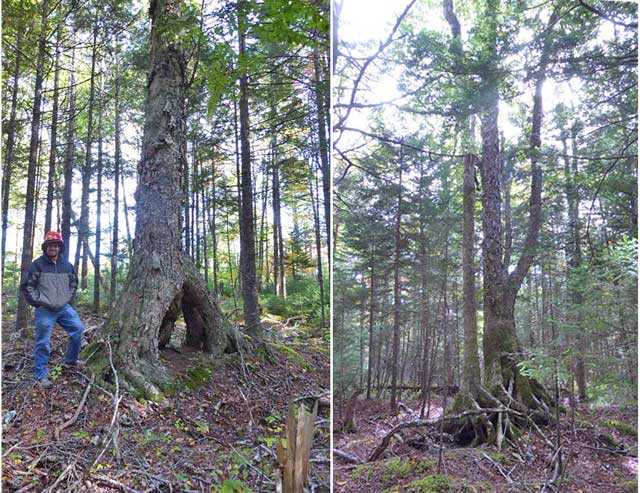
A curiosity: Highly “stilted” or elevated yellow birches (left photo and right trees in the photo at right). There was porcupine scat in the space between roots of the yB at left (I didn’t inspect the right one)
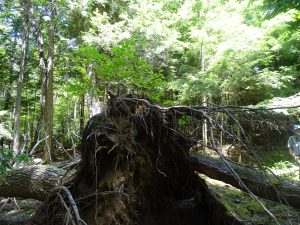 My explanation (hypothesis): the highly stilted yellow birches got established on top of the uprooted bases of large hemlock tip-overs soon after the tip-overs, as in the photo at right (taken at another site)…so the large roots enclosed, rather than were enclosed by, the mound that formed subsequently. The tip-over at right is a hemlock, approximately 26 inches dbh (diameter at breast height), and was still living, the yellow birch about 3 years old.
My explanation (hypothesis): the highly stilted yellow birches got established on top of the uprooted bases of large hemlock tip-overs soon after the tip-overs, as in the photo at right (taken at another site)…so the large roots enclosed, rather than were enclosed by, the mound that formed subsequently. The tip-over at right is a hemlock, approximately 26 inches dbh (diameter at breast height), and was still living, the yellow birch about 3 years old.
There are many stories to be told by these old forests.
————————-
Conform said they were not going to sugar coat what they are doing at this site, and they didn’t. There are many challenges, and certainly added expenses, to this type of approach.
But it offers an option that perhaps many private woodlot owners in NS who want to conduct modest harvests while maintaining the ecological integrity of similar “over mature” stands (many of which would qualify as Old Growth) would consider*. I had invited a close relative who falls in that category to come with me to the event, which he did and his teenage son came with us. We all appreciated what we saw and learned.
____________
*View: Gifts to a Future World: Conversations with Woodland Owners in Nova Scotia by A. Kekacs (2017).
Thanks woodlot owner C.C., Conform, and NSWOOA. It was especially appropriate to see this site and efforts on Thanksgiving weekend.
—————————–
Addendum, Jan 18, 2019:
“In the job David mentioned above, I cut everything with a chainsaw and we used a Bison 10000 mini forwarder to get the wood roadside. At Conform Ltd., we’ve used just about every sized equipment for shelterwoods and selection harvests with great results. Our harvesters have been:
John Deere 770
(4 wheeled harvester)
John Deere 1070
(6 wheeled harvester)
Ponsse Ergo
(8 wheeled harvester)
“Forwarders:
Fabtek 344
(4 wheeled forwarder)
Timber King TK458
(8 wheeled forwarder with half-tracks)
“There’s a lot of operator training required to do a quality job in these treatments no matter what gear is used. Extensive layout costs and pre planning are some other hurdles. As long as there continues to be silviculture funding of $550/hectare for these treatments, they can be profitable in our forests of today. Also, land owners typically see smaller $/tonne for stumpage for these treatments. The big profit of these treatments is long term payoffs from good forest management and the intangibles such as aesthetics, wildlife habitat, ecological value, etc” – Frank Higgins Jan 18, 2019 on HFC post

